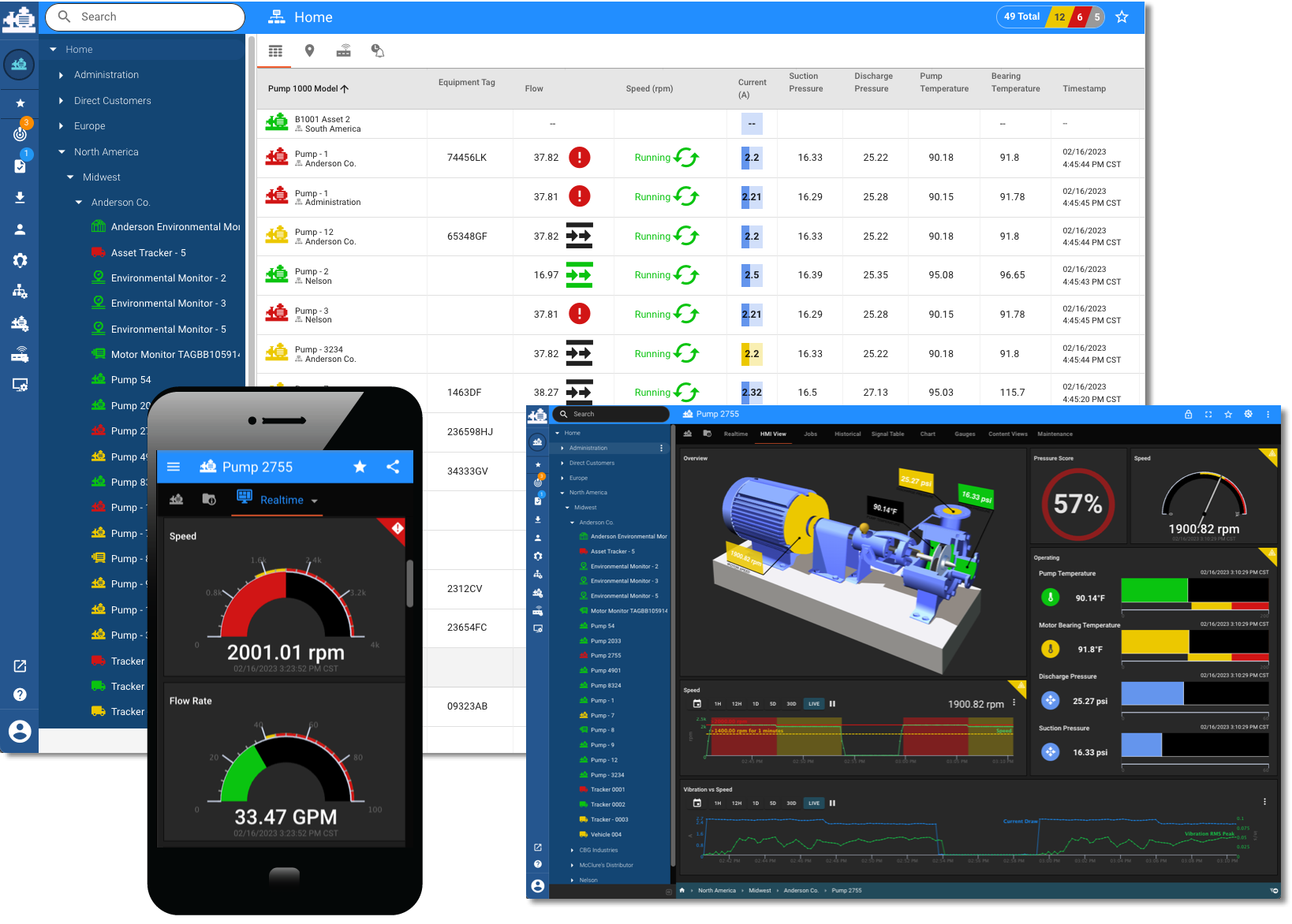ExoSense® Overview¶
ExoSense® is an end-to-end solution for remote monitoring applications that need to gather data from sensors, machines, PLCs, legacy controls, etc. It enables OEMs, Distributors, and System Integrators to provide customers with a branded and configurable application to go with connected devices and sensors.
Users are able to view machine and sensor data and insights, build dashboards, receive notifications on state condition changes, manage user access, generate reports, and manage their account.
OEMs and System Integrators are able to build and configure the application to look and feel like their own product, create integrations, and manage organization group hierarchy.
What is ExoSense?¶

ExoSense is a condition monitoring application that runs on top of IoT Platform services. It is highly configurable and supports a wide range of assets and application types - from factory equipment to remote monitoring of machines to mobile vehicles.
ExoSense is deployed as whitelabel instances, meaning users manage it as their own product offering, creating a hierarchy of customers and partners that control permission levels.
Digital Assets are collections of signals sourced from connected equipment, rules on those signals, digital content about the Asset, and dashboard visualizations.


Digital Assets¶
ExoSense® focuses around the concept of users interacting with digitalized Assets in the application. These assets represent real-world systems, machines, and equipment. Data signals, historical data, conditional rules, notifications, and permissions revolve around the concept of the asset.


Data Flow¶
Beyond meta data (images, fields, files, etc), assets are a collection of signals. A root signal is sourced from a IoT identity channel, which are typically from IoT edge devices (sensors, etc) but may also be from other data from third-party integrations. Assets may source data from 1 or more edge IoT devices and/or data integrations.


Requirements¶
Deploying / Running¶
ExoSense is both a web browser based application (front end) and a backend solution that handles all of the data flow, data storage, rules, and API functionality. ExoSense runs as a Murano solution, meaning it must run within Exosite's Murano platform (Exosite Cloud, Dedicated Cloud, or On Prem) as it uses Murano's IoT Connectors, databases, scripting, web-service, web-socket, web asset hosting, and other micro-services.
Individual ExoSense solutions are deployed as their own instances from with-in a user's Exosite business account. Each instance has it's own URL, branding, users, assets, hierarchy and data storage.
IoT Device Data¶
ExoSense receives data from IoT edge devices via Murano IoT Connector device events and using a common schema. For devices connected to other clouds or device platforms, or that sends data in a different format, a Murano IoT Connector must be created to handle the translation into the proper data events and schema.
Connecting a Device - Guide
Browser Support¶
ExoSense's user interface runs as a web application in a web browser on top of an IoT and application platform. The following tables list typical browsers and whether they are supported by ExoSense.
| Browser | ExoSense Support | Notes / Recommendations |
|---|---|---|
| Google Chrome (Recommended) | Supported | Recommended browser. |
| Microsoft Edge (Chromium Version) | Supported | Tested and validated. |
| Mozilla Firefox | Not Supported | Can be used but is not validated or tested. |
| Apple Safari | Not Supported | Can be used but is not validated or tested. |
| Microsoft IE version 11 | Not Supported (As of Oct, 2019) | Recommend Microsoft Edge or Microsoft Edge built on Chromium |
Mobile / Tablets
The ExoSense web application supports running in the browser of small touchscreen based devices, i.e. smart mobile phones and tablets. These devices have many browsers that can be installed and run on them. Exosite has been validated on specific devices/browsers such as iPhone iOS (Safari, Chrome), iPad iPadOS (Safari), and Android OS (Chrome). The functionality for small screens has been limited for user experience reasons, these details can be found below.
Small Screen Functionality
Touchscreen Tablet
- Size: 600 pixels < width < 960 pixels
- Dashboard Viewing: All panels are full screen width and are stacked vertically
- Disabled Functionality:
- Asset Create/Edit/Duplicate/Delete
- Dashboard Create/Edit/Delete
Touchscreen Mobile Phone
- Size: 360 pixels < width < 600 pixels
- Dashboard Viewing: All panels are full screen width and are stacked vertically
- Disabled Functionality:
- Asset Create/Edit/Duplicate/Delete
- Dashboard Create/Edit/Delete
- Dashboard Full-screen mode
- Create a Report
- Create a Template
- Application Setup / Administration
- Device Software Packages UI on Device Overview